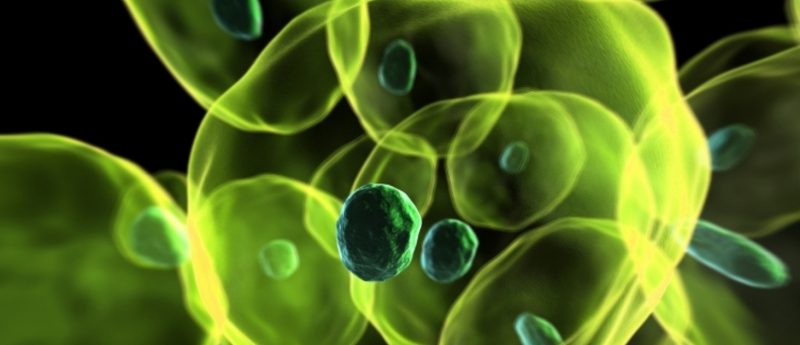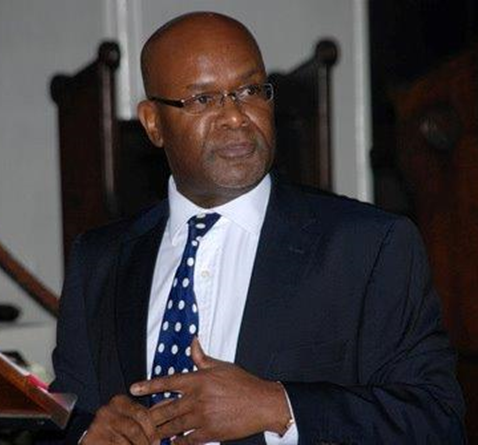Could gene therapy win the fight against sickle cell disease?

In this interview with John James, Sickle Cell Society, and Mohammed Asmal, bluebird bio, learn more about sickle cell disease and the potential of gene therapies.
In this interview with John James, Sickle Cell Society (London, UK), and learn more about sickle cell disease and the challenges in its treatment. Plus, hear from Mohammed Asmal, bluebird bio (MA, USA), about the potential of gene therapies to improve quality of life for patients and recent advances in their development.

John James
John James is the Chief Executive of the Sickle Cell Society, a leading national Charity focussed on improving policy and services for people with sickle cell disorder. John has over 33 years of leadership and management experience in the NHS. In addition to four NHS Chief Executives roles, John has held a variety of senior management and Board level posts in London teaching Hospitals, Primary Care Trusts and Mental Health NHS Trusts. During his career he has also served on a number of national and regional Committees. He was Chair of the West London Cancer Network between 2002 and 2005 and Chair of the North West London Diabetes Network between 2003 and 2004. Before joining the Sickle Cell Society, John worked as a senior civil servant at the Department of Health for 3 years; first as Program Consultant on leadership for the NHS Next Stage Review and secondly as Deputy Director ((Change and Transition ) for the NHS Medical Director/ Director General. John has received a national NHS Leadership award and actively promotes personal development as a leader. He has been acting as a Mentor and coach for 20 years. Beyond his current Chief Executive role, John serves as a Trustee on two national Charities and is also a Magistrate.

Mohammed Asmal
Dr. Asmal is Vice President of Clinical Development at bluebird bio, where he leads clinical trials in gene therapy for hemoglobinopathies and rare neurodegenerative disorders. He is a medical scientist with an MD from Columbia University (New York City, USA) and a PhD in molecular biology. Dr. Asmal trained in Internal Medicine and Infectious Diseases at the Brigham and Women’s and Massachusetts General Hospitals (Boston, USA), followed by a post-doctoral fellowship studying HIV immunology at Harvard Medical School. Additional clinical trials experience includes small molecule drugs for hepatitis C, solid tumor oncology and influenza.
What is the Sickle Cell Society?
John James (JJ): I’m the Chief Executive Officer of the Sickle Cell Society, a national charity for sickle cell founded around 40 years ago. Our raison d’être is to help support and assist people who live with sickle cell and their families, so that they can have the best quality of life possible with their condition. The organization has some well-known patrons who give their name in support of the work that we do. We have a board of trustees and a small team of 10 whole time equivalent staff, small group of Clinical and Scientific Advisors and many Volunteers.
What causes sickle cell disease and how can it affect patients’ lives?
JJ: Sickle cell is the UK’s most common genetic blood condition. Most people, who don’t have sickle cell, have round blood cells which travel all through parts of the body carrying oxygen. When you are born with sickle cell anemia, instead of a full blood cell, you have sickled cells. Sickled red blood cells which are sticky and therefore don’t carry the requisite oxygen to the different parts of the body.
There’s only three treatments [for sickle cell], which have been around for the last 20 years
The consequence of that is something called a sickle cell crisis; you can end up in the most excruciating pain because there is not enough oxygen going to the parts of the body that need it. Furthermore, if there’s not enough oxygen going to the brain, then you’ll have a stroke. Sickle cell disease also leads to the organs in the body deteriorating over time. As evidenced on the National Hemoglobinopathy Registry, although some patients with sickle cell will live beyond their 50s, the vast majority will die earlier than the general population.
Is there a reason for the high prevalence of sickle cell disease in the UK?
JJ: When you look at the areas which have the highest prevalence of sickle cell in the UK, such as London, which has approximately 60% of all sickle cell in the country, or the West Midlands, the North West, Bristol, the East Midlands and parts of the North of England like Tyneside, these are areas where there are many generations of people who are from a black and ethnic minority background.
Sickle cell affects everybody, but if your heritage is from a black or a minority ethnic background, such as Africa, particularly West or South Africa, the Caribbean, Brazil, India, Portugal and the Arab states, you’re more likely to be a carrier. However, it’s very important that people don’t think that sickle cell only affects black people. It affects the general population; 1 in every 300,000 white UK births today is a carrier of sickle cell.
What existing treatments are there for sickle cell disease?
JJ: The Sickle Cell Society doesn’t invest in particular research and development or clinical trials because we’re not that wealthy, but we do work with industry and we want to encourage greater choice in treatments for sickle cell. For a number of years, the only treatment available for sickle cell were hydroxyurea, or hydroxycarbamide, which was a drug that was not made specifically for sickle cell but does improve the quality of their life for some patients. However, hydroxyurea is not for everybody as not everybody can tolerate it. If you have a serious crisis, which you can’t tolerate with just paracetamol or staying at home, you end up in A&E; sickle cell is in the top 20 of all causes for emergency admissions in London.
In addition to hydroxyurea, you can be treated with morphine, ketamine and strong opiates, or receive a blood transfusion. There is evidence to suggest that by the time a child with sickle cell is 12 years old they might have had at least two silent strokes. Transcranial Doppler screening is available for children, to monitor them and to try and reduce incidence of stroke, but this isn’t a treatment.
Therefore, there’s only three treatments, which have been around for the last 20 years, even though sickle cell is a global disease; it’s big in France and Holland, and the USA has over 120,000 people living with sickle cell anemia and many more as carriers. In the UK, the National Hemoglobinopathy Registry puts the number in the region of 11,000; however, we believe there is at least 15,000-20,000 people who are living with sickle cell anemia.
What are some of the treatments in the pipeline?
JJ: We are pleased to say that now many of the global pharma companies are looking at clinical trials for sickle cell, which is a good thing as, if they get past the clinical trial process, this will help there to be a wider range of treatments available for patients. Bone marrow and stem cell transplantations are also available now for children but they’re not available for an adult. We’re working with NHS partners such as Guys & St Thomas’ and Kings to encourage a trial for adult transplantation so we think that there is a lot of potential in bone marrow and stem cells for the future.
Mohammed Asmal (MA): bluebird bio is currently conducting two Phase I clinical studies of its LentiGlobin gene therapy for severe sickle cell disease. Results from the first patient with severe sickle cell disease treated with LentiGlobin demonstrated the potential for a transformative effect of lentiviral-based gene therapy in this population. A subsequent cohort of patients treated with LentiGlobin demonstrated more heterogeneous results, elucidating key technical challenges for delivery of gene therapy in this population.
Bone marrow and stem cell transplantations are available now for children but they’re not available for adults
To address these technical challenges, the drug product manufacturing process was refined to increase the potency of our drug product, and the study protocol was modified to introduce changes to the conditioning regimen administered to patients and the incorporation of regular blood transfusions prior to stem cell harvest, designed to make the bone marrow more receptive to engraftment. This study is enrolling patients under the revised protocol and we expect to report early results from the patients enrolled under the updated study protocol later this year.
While there has recently been an uptick in research and development in sickle cell disease, the only stem cell treatment available to patients at this time is allogeneic hematopoietic stem cell transplant, typically only performed on very severe patients with a matched sibling donor. Most patients do not have a matched sibling donor and thus are unable to receive a transplant due to the risk of graft vs. host disease (GvHD) and graft rejection. Because gene therapy involves an autologous transplant (using the patient’s own cells), there is no risk of GvHD or graft rejection.
What are the benefits of treating sickle cell disease with gene therapy?
MA: The goal of our gene therapy is to address the underlying cause of the disease by harvesting the patient’s stem cells and using a lentiviral vector to introduce a corrected hemoglobin-producing gene into their DNA before returning the cells to the body. Our hope is that by addressing the underlying cause of the disease, a one-time treatment will have long term clinical benefit for patients.
Why is sickle cell difficult to treat?
JJ: Sickle cell is an unpredictable disease to treat, and can have a significant impact psychologically and in relation to educational attainment. Sickle cell is not a condition that is in people’s everyday awareness, unlike conditions such as Cystic Fibrosis. The investment in services over the years has been very limited, even with the work we do as a charity. For example, if you look at the Cystic Fibrosis Trust, they have a smaller cohort of patients nationally but are nearly 30 times wealthier than us.
MA: Sickle cell disease has traditionally been under-researched and, in the course of our clinical development program, we have learned a tremendous amount about the complexity of the disease. This has required us to make adjustments along the way, as we have done with our manufacturing process and study protocol, but it has also allowed us to develop a deep expertise in the disease that we hope will allow us to bring a therapy to patients that will provide a transformative benefit.
How do you think treatment plans will evolve?
JJ: I think in the future, we will be able to have a wider range of treatment options . Subject to the effectiveness of the outcome of the above clinical trials, what I hope to see is that whatever age you are you will have access to a range of different treatments which would be most appropriate for you. The underlying principle in all those potential new treatments is improving the quality of one’s life and improving mortality, which would be a far better situation than we have at the moment.